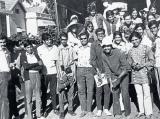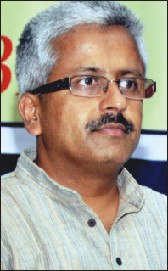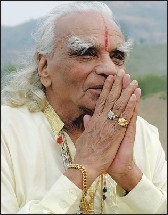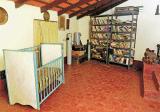New Delhi :
I was provoked to write my memories of what was it to be a ‘Madrassi’ which was synonymous of being a South Indian in the late fifties, after being alerted to a Facebook post of a South Indian journalist who recalled his interaction with U. R. Ananthamurthy, who passed away three days ago.
The south Indian journalist narrates that in 2004-5, U. R. Ananthamurthy advised him, “Stay bold, original and South Indian in a Delhi that we may not like. Truth will not get a standing ovation, it will get you harassments, pain and dejection, but one has to stay, put up, unmindful of the push backs.”
The journalist recalls that Ananthamurthy told him to stand up to the patronizing attitude shown towards him by others and uphold the principles of his profession. I admired and respected the late U.R. Ananthamurthy, the Jnanapith and Padma Award winner, who headed the Sahitya Academy, and who was a fellow Kannadiga. He used to invite me to functions at the academy located near Mandi House and had warm interactions with me. I was present when he was awarded the Jnanapith Award by late Prime Minister P. V. Narasimha Rao.
On reading his suggestion to journalist Vinod K Jose, my thoughts also went back to the late fifties when I had first come to Delhi as an escort to my female cousin who was taking part in a classical music competition organized by the All India Radio. My law exam results were due and I was searching for a Bombay newspaper that was to publish the results. My uncle, U. S. Mohan Rao, who was then heading the Publications Division of the Government of India, and with whom I was staying in Delhi, said he would take me to the Press Information Bureau, which used to get the days newspapers from around the country by the evening.
I was escorted to the room of the then Principal Information Officer, T.R.V. Chari. He called for the Times of India of Bombay and asked for my roll number. He saw the results published in the newspaper, and said he did not see the number. As I was dejectedly getting up to leave, he asked for my name. When I gave it, his eyes brightened and said my dear fellow; you have stood first in the state and showed me the paper. They had published my name right at the top with my roll number.
Next, he asked me please go to the adjacent room. “We are recruiting some boys and please appear for the exam and let me see how you fare.” I took the exam and this ‘Madrassi’ boy came to live in Delhi, though his heart was still in Bombay. A law degree and a father’s law practice that I could inherit were not to be my calling.
The time I had arrived in Delhi, South Kanara, the district I belonged to, was a part of the Madras Presidency. The States Reorganization Commission had just submitted its report.
I stayed with my uncle near the Old Secretariat and one of my cousins was staying in South Avenue. I used to visit my cousin in South Avenue and for returning home, I used to take DTC Bus No.9 to go to the Old Secretariat and further to the Delhi University campus. One day, as I was waiting at the bus stop in South Avenue, an old man asked me, “Where are you from, young man? I said, “from the Madras Presidency.” He got annoyed, and told me, “You do not have to crack jokes at me, and I expect you to give me a straight forward answer.” I was puzzled and respectfully replied, “Dear sir, I belong to Mangalore in South Kanara of the Madras Presidency, and I gave you a straight forward answer. I do not know you, and have no intention of misleading you.”
His eyes brightened, and he told me, “I now believe you.” And to my surprise, he started dancing and singing at the bus stop-“I married a girl from Mangalore.” He then told me that his name was Harindranath Chattopadhyaya, and he had married Kamaladevi , a Saraswat Brahmin from Mangalore. Youngsters of today would remember him as the adorable grandfather in the film Bawarchi. Kamaladevi Chattopadhyay of course, was the legendary social reformer and freedom fighter.
He patted me on the back and said, I was always welcome to see him at his house and gave me his address. It was a pleasant change for me to see that somebody could tell the difference between a Canarese (Kannada) accent and a Tamil accent.
I moved home once again to stay with my cousin, who moved from South Avenue to Moti Bagh. After a couple of years, the cousin was transferred out of Delhi, and I had to look for a house. I told my colleagues that I was looking for a house to rent. Their reaction was, ” yaar tu toh Madrassi hai, tereko koi bhi ghar de dega.” (You are a Madrassi, anybody will give you a home). A ‘Madrassi’ was considered an ideal tenant those days, generally vegetarian, god fearing, teetotaler and non-smoker. I barely fitted into that stereotype, but had learned not to correct people when it worked to my advantage to be a ‘Madrassi’.
For couple of days , I trudged the streets of Karol Bagh, which was the popular destination of all South Indians wanting to rent cheap accommodation. I visited realtors and accompanied them to several apartments. House owners would willingly meet with me, but when they got to know that I was a bachelor and that my parents would not be living with me, they were skeptical. And then, when I was asked if I drink alcohol, I would truthfully answer yes. Door shut.
My house hunting went on, as this ‘Madrassi’ still hadn’t learned to fib even a bit. One Sunday, I landed up at Pusa Road and was told that there was an outhouse of a large house available for rent. A tough looking lady opened the door. I was almost resigned to a No yet again, so before the questioning began, I laid it out there in the open. I rattled. “I am single, a bachelor who had no intention of marrying soon, my parents don’t live with me, I occasionally drink and I smoke. I am a Madrassi.” I was quite resigned to the fact that the landlady would not even offer me tea, let alone rent out her outhouse.
There was a twinkle in her eye. She said to me, “beta, you are welcome to stay in my outhouse….I want you to be careful, the adjacent outhouse is rented by Punjabi girls. You are a handsome Madrassi, and one of them may like to hitch onto you. Good luck.”
The Madrassi from Mumbai stayed at the Pusa Road house for over a year and the Punjabi girls used to wave at me when they saw me. It stopped there.
Mr. I. Ramamohan Rao is a former Principal Information Officer, Government of India. He can be contacted at raoramamohan@hotmail.com By I. Ramamohan Rao (ANI)
source: http;//www.aninews.in / ANI News / Home> National / by I. Ramamohan Rao / New Delhi – August 25th, 2014






